Let’s talk about rocks
I’ve spent my dev time over the past few weeks (how has it taken so long?) teaching myself how to create rocks. From the beginning I’ve had a scene in my mind of a hermitage clinging to the cliff face of the island. It all seemed so simple.
Turns out, rocks are hard (I’m allowed puns, I’m a dad).
ReferenceGeology is important for my island. I want geology which emphasizes verticality through strong layering and jointing – like the Oregon coast or the slate islands of the Skelligs. But I want to avoid the polyhedral basalt columnar jointing of places like the Giant’s Causeway.

Cannon Beach, Oregon (image:
Tjflex2)
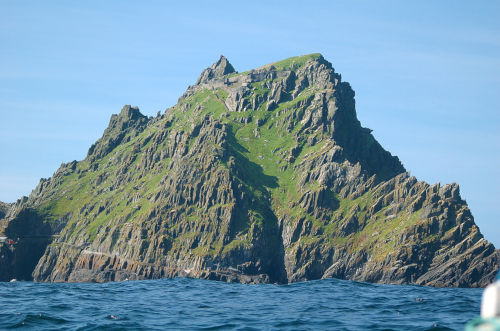
Skellig Michael, Ireland (image:
chb1848)
I deeply respect the art style of
The Witness, forged by Luis Antonio (
http://www.artofluis.com), Eric Anderson (
http://www.edoublea.com), Orsi Spanyol (
http://www.orsispanyol.com), and Jonathan Blow. It’s impressionistic, but not in the sense that it is blurry or ill-defined. Very much the opposite. The rendering is crystal-clear, dazzling in the eternal daylight of the game, every detail sharp and defined. In Impressionist paintings individual brush strokes speak volumes, describing not surfaces but how light falls on surfaces in fleeting instants. In
The Witness the brush strokes are individual polygons. There are very few textures. It’s breathtaking. And also, really, really hard to do well.
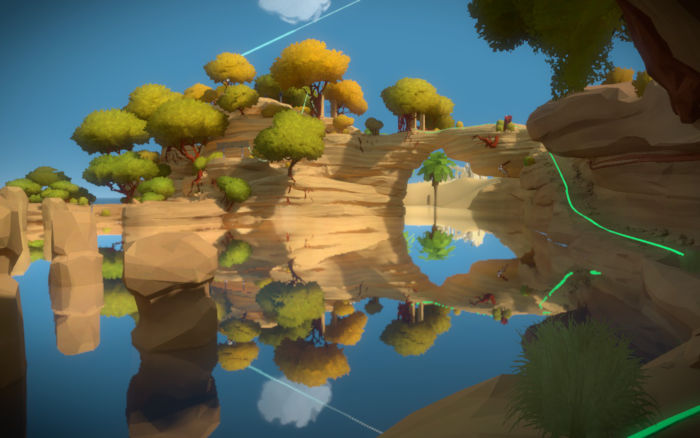
Symmetry Island,
The Witness (image: Screenshot, author’s pc, taken 30 April 2019)
I have been avoiding rocks because I’ve never done them before. I can model architecture and most manmade things. But natural things - not so much. That’s part of the fun of developing this game, picking up new skills. Also, like many 3d artists, I’m more comfortable with fine detail and realism than impressionism. So, rocks
a la The Witness.
LearningLuis Antonio discussed rock and process (
http://www.artofluis.com/3d-work/the-art-of-the-witness/soon-symmetry-island-and-glass-factory/ - scroll down to the ‘Cliff Path’ section). And Eric Anderson wrote in-depth about his process ‘finding’ the rocks in
The Witness (
http://www.edoublea.com/2016/01/20/on-the-rocks/). Both artists began with hi-res sculpts and then decimated down to low-poly. Anderson posted a render of his practice model, so, that’s where I started, copying him. His work:
My work (two attempts, hi-res on the left, low-res on the right):

Okay?
I have Zbrush and like it (that interface, tho) but I wanted to challenge myself to use modelling tools I have available and useabale on-the-go, without my drawing tablet. I use Cinema4D for most of my normal modelling, and it has (okay) sculpting tools. I did the test blocks above with it and moved on to individual boulders:

(Base model, Sculpted, Decimated)
The models seemed too visually “noisy”, though – something which
The Witness team talk a lot about in their own work. I really wanted something more “railway poster”. And then I stumbled across Polybox’s
“Stylized Cliffs” on the Unity Asset Store. The effect is closer to what I am looking for – less noisy, simpler, and, maybe, possible to do without sculpting. And I like the way they layer up when grouped together at different scales.
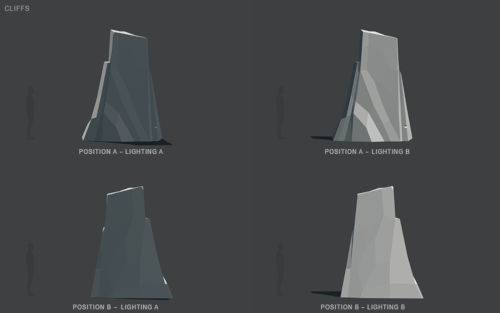
“Stylized Cliffs” by Polybox. (Image:
Polybox)
So, I gave it a try myself:

(God bless C4D’s Voronoi Fracture object! The game’s art wouldn’t be possible without it. I use it heavily in the buildings, too.)
So, I had something of a starter-set for cliff-building. Now, to build that lonely hermitage.
The HermitageI based the hermitage on two medieval cliff hermitages I know personally: Knaresborough and Cratcliffe Tor. They’re very different, but they kind of go together in my mind because they feature a rock-cut chapel and evidence for associated structures. My imagination has always been engaged by these places, so I thought I’d blend them and add a dash of the Greek cliff-hermitage tradition for fun. Easy, right?
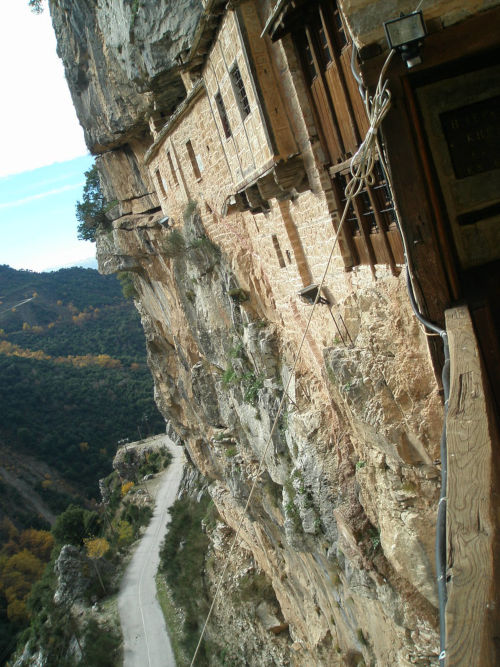
Kepina Monastery, Greece (Image:
peppi9)
So, I began assembling cliff faces with hollows for hermits:
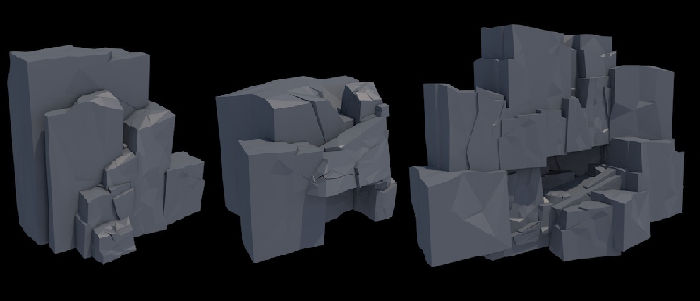
Three tries…
Even these tests are too noisy in some places. And the hollows don’t feel right. I threw away many attempts.
What I was lacking was a story for the hermitage. None of the cliff faces I built leant themselves to narrative. Eventually, by pushing around various vague house-shapes I discovered a story – or the remains of one – enough to move forward.
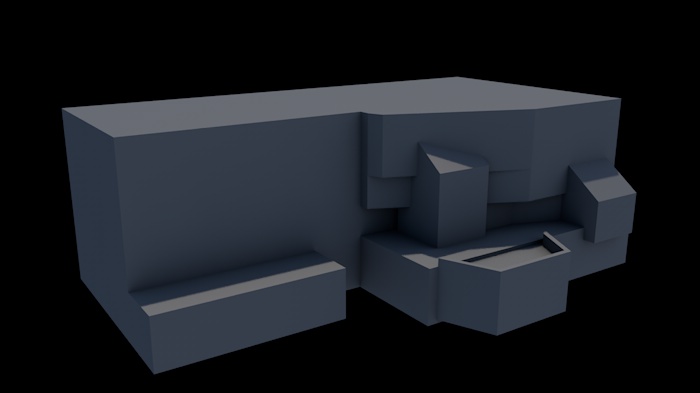
Grayboxing
So, this is where I’m at right now.

Ta-da!
I’m still not happy with it (that bridge – it looks like it came from a willow ware teacup!). But, I do feel a little more confident about rocks and cliffs – which was the point. And, I do need a cliff face to test out camera clipping and movement constraints on vertical surfaces, so this will have to do until more of the story reveals itself.
Or, until I realize that ‘good enough’ is okay and move on. There’s an island to build and many more stories to discover.
 Community
Community DevLogs
DevLogs The Resurrection - A game about (re)building the past
The Resurrection - A game about (re)building the past Community
Community DevLogs
DevLogs The Resurrection - A game about (re)building the past
The Resurrection - A game about (re)building the past
